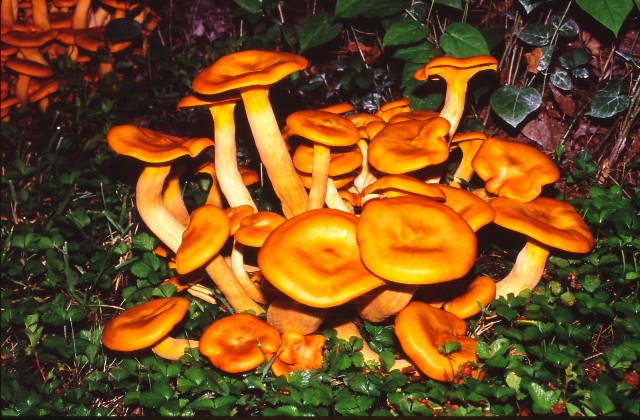
Autumn is the time of the year when folks look up to see and enjoy brightly colored leaves on trees. But autumn is also a good time to look down in order to spot mushrooms that may be every bit as colorful as leaves.
Not only that, mushrooms come in a variety of shapes that can be enthralling to look at, making you envision things as diverse as turkey tails, umbrellas, and toads!
Mushrooms are often pictured in old folktales as stools for toads, giving us the commonly heard name of “toadstool”. Some stories suggest that magical little people, such as leprechauns or fairies, use mushrooms for umbrellas.
Perhaps mushrooms are so prominent in ancient myth because they are, indeed, mysterious to most people. They do not contain chlorophyll, the chemical substance that makes plants green and with which trees, shrubs, vines, and flowers make their own food.
And unless you look at them closely, mushrooms do not appear to make seeds to reproduce, yet they seem to just pop up out of nowhere overnight in many different places and on many different kinds of things.
Lastly, of course, some mushrooms can kill you if you eat them, perhaps making them a little scary to folks.
You can think of a mushroom as being similar to a flower bloom, but instead of making seeds to reproduce, a mushroom makes spores. A spore is usually one-celled, extremely tiny, and primitive in relation to a seed. One way to see spores is to place a mushroom cap on a piece of white paper so they can fall onto it.
Just as a flower grows on a stalk that has roots, so too does a mushroom—sort of. A mushroom springs forth from a huge network of strands or threads composed of simple cells that grow underground. If you dig in the soil around a mushroom, you may find these fine white threads weaving throughout the dirt.
If the mushroom was located on a mat of leaves, the threads can be found between the leaf layers. If the mushroom is taken from the surface of a dead tree, the strands will be seen in the decaying wood. This network is known as the “mycelium” (my-SEE-lee-um), and it is from here that the mushroom grows.
The mycelium lives on from year to year, having started its life as a spore. Depending upon the species, it grows by getting nourishment from either dead substances (such as snags, branches, leaves) or live ones (such as a living tree).
So take a stroll and keep an eye open for mushrooms or an animal eating one. Chipmunks, deer, moles, shrews, skunks, squirrels, turtles, and even grouse make meals of the larger mushrooms.
Enjoy the colors and shapes of the many species, and bring your imagination along. Then you might find mushrooms to be magical, just as I do.
Naturalist Marlene A. Condon is the author/photographer of The Nature-friendly Garden: Creating a Backyard Haven for Plants, Wildlife, and People (Stackpole Books; information at www.marlenecondon.com). If you have a question about plants or animals, or gardening in a nature-friendly manner, send it to [email protected] and please watch for an answer in this paper.


